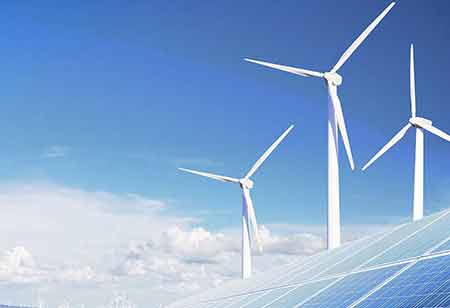Thank you for Subscribing to Energy Business Review Weekly Brief
Innovative Cooling Technologies: For a Sustainable Business and Climate
Latest data has revealed that carbon emissions have started to peak again, and the recent wildfires, floods,

By
Energy Business Review | Sunday, January 16, 2022
Stay ahead of the industry with exclusive feature stories on the top companies, expert insights and the latest news delivered straight to your inbox. Subscribe today.
With increasing awareness of climate change, making smart investments in greener technologies that encourage sustainable environments and enhance businesses is vital.
Latest data has revealed that carbon emissions have started to peak again, and the recent wildfires, floods, and extreme weather are evidence of the impacts of the heightened emissions growing frequent and unavoidable.
While numerous positive steps have been taken, including the landmark Paris Climate Agreement and the rapid rise of price-competitive renewable energy sources, it is clear that innovation is necessary for every aspect of the energy system, the principal purpose being averting the disastrous consequences caused by climate change.
Significant attention and investment have gone toward innovation in low-carbon energy production, giving way to the growth of solar and wind power technologies. Yet, comparatively less attention has been allotted to techniques used in equipment and appliances, which creates the electricity demand.
Lately, the Rocky Mountain Institute report estimated a four-fold hike in the number of residential air conditioners (RAC) on the market by 2050, numbers increasing from 1.2 to 4.5 billion units. The value of carbon ejected by RACs is anticipated to raise the global temperature by 0.5°C within 2100.
The differential growth of this scale in the number of air conditioners will make it almost impossible to keep global warming in check, and compliance with the Climate Agreement goal signed in Paris is less than two °C above preindustrial levels.
This phenomenon presents a huge market opportunity for investing in efficient and transformative cooling technologies that ensure the development and achievement of climate goals.
An air conditioner designed to increase efficiency and minimize climate impact will provide a breakthrough by accelerating the intended effect of the Kigali Amendment. Additionally, provides a renewed economic opportunity. By investing in employed cooling technologies, businesses can also find new growth.
Even though the technology for replacing the traditional refrigerants and high energy consumption exists, translation of the prototypes into marketable systems is the challenge that must be overcome. Adsorption chillers using solar, thermal, or waste heat and low-GWP refrigerants are some technologies that, if made viable for the marketplace, will play a significant role in reducing GHG emissions.
Open innovation events can provide a pathway for encouraging new ideas by incentivizing technological pioneers worldwide. Interconnecting such programs with government-led bulk procurement programs, allowing seed investments, and negotiating advanced market commitments will also boost the transformations to sustainable cooling methods.






